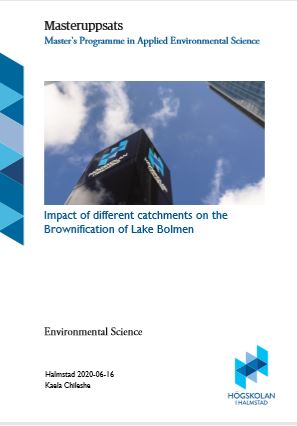Impact of different catchments on the Brownification of Lake Bolmen

Increased DOC and Fe concentrations from terrestrial landscapes has led to the browning of boreal surface waters. The negative societal and ecological impacts of brownification are increased cost of water purification, increased presences of algae and cyanobacteria, loss of ecosystem services and reduced recreational value. Impacts of climate change, changes in land use and reduced sulfur deposition have been identified as drivers of brownification. While it has been recognized that DOC and Fe from terrestrial landscapes is increasing, little has been done to understand the impact of different land use practices on brownification.
This research aims at evaluating the DOC and Fe runoff from spruce plantations, clear-cuts and wetland landscapes and determining the export of DOC from these landscapes into humic lakes. To do that, streams running through these three different land use types were sampled for water colour, pH, temperature, conductivity, DOC and Fe both at upstream and downstream of each land use type. Further, water discharge was calculated with the help of flow speed measurements and stream profiling (width, depth and channel shape). DOC (but not Fe) concentrations changed significantly depending on land use type. Wetlands lead to reduced DOC concentrations, whereas especially spruce plantations lead to increased stream water DOC concentrations.
Chileshe, Kaela
Halmstad University, School of Business, Engineering and Science,.
Master’s Program in Applied Environmental Science 60 hp
Impact of different catchments on the Brownification of Lake Bolmen